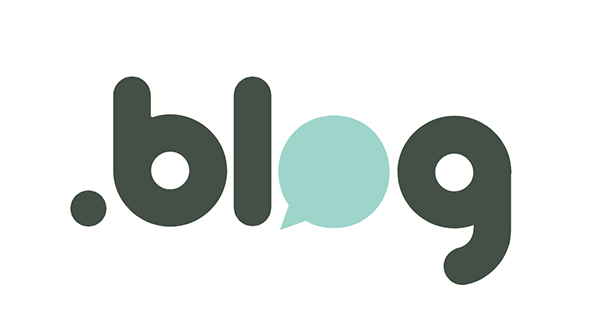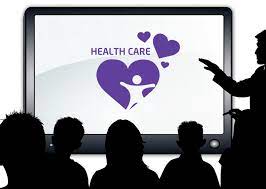Health education is a profession of educating people about health
Health education is a profession of educating people about health. Areas within this profession encompass environmental health, physical health, social health, emotional health, intellectual health, and spiritual health, as well as sexual and reproductive health education
Health education is a profession of educating people about health.[1] Areas within this profession encompass environmental health, physical health, social health, emotional health, intellectual health, and spiritual health, as well as sexual and reproductive health education.[2][3]
Health education can be defined as the principle by which individuals and groups of people learn to behave in a manner conducive to the promotion, maintenance, or restoration of health. However, as there are multiple definitions of health, there are also multiple definitions of health education. In the U.S., the Joint Committee on Health Education and Promotion Terminology of 2001 defined Health Education as “any combination of planned learning experiences based on sound theories that provide individuals, groups, and communities the opportunity to acquire information and the skills needed to make quality health decisions.”[4]
The World Health Organization (WHO) defined Health Education as consisting of “consciously constructed opportunities for learning involving some form of communication designed to improve health literacy, including improving knowledge, and developing life skills which are conducive to individual and community health.”[5]
History[edit]
Health education mindmap
It is often thought that health education began with the beginning of healthcare in the earliest parts of history as knowledge was passed from generation to generation.[6] Some people might be surprised to hear that health education’s roots date back to the Greeks between the sixth and fourth century B.C.E. They shifted their focus away from superstitious and supernatural conceptions of health and toward the physiological causes of ailments, according to documents that have been uncovered. They discussed how physical health, social settings, and human behavior are connected to preventing disease and sustaining good health. The Greeks wanted to empower people and communities by establishing supportive settings and regulations that would promote taking medication and upholding healthy behaviors. They did this by educating people about their health and developing their skills.[7] Other preserved texts from ancient civilizations in China, India, Egypt, Rome, Persia also contain information regarding various diseases, their kinds of treatments, and even preventative measures.[6] The first medical school was later founded at the end of the 8th century in Salerno, Italy and focused a significant portion of its curriculum on proper hygiene and healthy lifestyles.[6] Much later, Johann Guttenberg’s printing press paved the way for making educational materials more accessible as some of the first things to be printed were treatises regarding health.[6] Informational materials containing information about hygiene and healthy lifestyle choices became popular as a tool to combat epidemics.[6] In the 19th century, “awareness-rising” began to increase to improve the knowledge of the average people regarding health and other topics.[6] As medicine has continued to progress, with new fields being created to address new problems, so too has methods of providing health education.[6]
Prior to the 1960s, the physician was primarily in charge and the patients were expected to have a passive role in their own health decisions.[8] In 1976, the Patient Education and Counseling journal was founded and the concept of health education began to really take off.[8] It was around this time that it became apparent that if patients are informed about their health, they could improve it through various lifestyle changes.[8] In the 1980s, patient advocacy groups drew attention to the issue of patients’ rights such as the right to be informed about health conditions and the potential options for care.[8] The 1990s fully brought about the shared decision making model present in healthcare settings today, including the emergence of electronic health communication.[8] Lastly, in the 21st century, there has been an emergence of associations designated as platforms for promoting health education and communication.[8]
In the United States specifically…
The purpose and approach of health education in the United States have evolved over time. From the late nineteenth to the mid-twentieth century, the aim of public health was controlling the harm from infectious diseases, which were largely under control by the 1950s. The major recent trend regarding changing definitions of school health education is the increasing acknowledgement that school education influences adult behavior.
In the 1970s, health education was viewed in the U.S. mostly as a means of communicating healthy medical practices to those who should be practicing them.[9] By this time, it was clear that reducing illness, death, and rising health care costs could best be achieved through a focus on health promotion and disease prevention. At the heart of the new approach was the role of a health educator.[10]
In the 1980s definitions began to incorporate the belief that education is a means of empowerment for the individual, allowing them to make educated health decisions. Health education in the U.S. became “the process of assisting individuals… to make informed decisions about matters affecting their personal health and the health of others.”[11] This definition emerged in the same year as the first national-scale investigation of health education in schools in the United States, which eventually led to a much more aggressive approach to educating young people on matters of health. In the late 1990s the World Health Organization launched a Global Health Initiative which aimed at developing “health-promoting schools”, which would enhance school health programs at all levels including: local, regional, national, and global level.[12]
Today school health education is seen in the U.S. as a “comprehensive health curricula”, combining community, schools, and patient care practice, in which “Health education covers the continuum from disease prevention and promotion of optimal health to the detection of illness to treatment, rehabilitation, and long-term care.”[13] This concept is recently prescribed in current scientific literature as ‘health promotion’, a phrase that is used interchangeably with health education, although health promotion is broader in focus.
Role of the Health Education Specialist[edit]
A health educator is “a professionally prepared individual who serves in a variety of roles and is specifically trained to use appropriate educational strategies and methods to facilitate the development of policies, procedures, interventions, and systems conducive to the health of individuals, groups, and communities” (Joint Committee on Terminology, 2001, p. 100). In other words, they conduct, evaluate, and design activities that pertain to the improvement of the health and well-being of humans. Examples of this include “patient educators, health education teachers, trainers, community organizers, and health program managers.”[14] There is a variation in job titles and because of this, there is not a definite system of one health education system. In January 1978 the Role Delineation Project was put into place, in order to define the basic roles and responsibilities for the health educator. The result was a Framework for the Development of Competency-Based Curricula for Entry Level Health Educators (NCHEC, 1985). A second result was a revised version of A Competency-Based Framework for the Professional Development of Certified Health Education Specialists (NCHEC, 1996). These documents outlined the seven areas of responsibilities which are shown below. The Health Education Specialist Practice Analysis (HESPA II 2020) produced “a new hierarchical model with 8 Areas of Responsibility, 35 Competencies, and 193 Sub-competencies”.[15]
Health education aims to immediately impact an individual’s knowledge, behavior, or attitude about a health-related topic with the ultimate aim of improving quality of life or health status for an individual.[16] Health education utilizes several different intervention strategies in its practices to improve quality of life and health status. Health education intervention strategies involve a planned combination of elements that work together to produce change in an individual’s skills, behavior, knowledge, or status related to health.[16]
Peer Health Educators[edit]
Peer health education is described as student’s taking initiative to inform their peers on how to live healthy lifestyles. Prevention is the biggest aspect of this idea and often includes alcohol, sexual health, and emotional wellbeing education in addition to many other aspects. Sloane and Zimmer also describe peer health education as “motivational models designed to empower students to help each other promote positive health beliefs and behaviors”[17] Health education specialists often advise peer educators as well; this creates relationships with health professionals while providing relevant resources and models necessary to educate the most students possible.[17]
The most research on peer educators has been done within colleges and universities within Western-civilizations. However, a specific example of peer health education being utilized is seen within The Shantou Experience in China.[18] In this experience, medical students were selected to educate their peers on topics from diet and safer sex to mental and physical health. Self-administered questionnaires were used to track results from the participants as well as from the peer health educators. According to the questionnaire results, “All peer educators responded positively and the majority of students respondents positively evaluated. Although some students preferred to seek health information online, approximately one-quarter of the student respondents would contact peer educators”.[18] Ultimately, peer education has a greater acceptance in Western-societies and would require “cultural adaptation for greater effectiveness in China” and other Eastern-societies.[18]
Teaching School Health Education[edit]
In the United States, around forty states require the teaching of health education. A comprehensive health education curriculum consists of planned learning experiences that will help students achieve desirable attitudes and practices related to critical health issues. Studies have shown that students are able to identify how emotions and healthy eating habits can possibly impact each other.[19] Some of these are: emotional health and a positive self-image; appreciation, respect for, and care of the human body and its vital organs; physical fitness; health issues of alcohol, tobacco, drug use, and substance use disorders; health misconceptions and myths; effects of exercise on the body systems and on general well being; nutrition and weight control; sexual relationships and sexuality, the scientific, social, and economic aspects of community and ecological health; communicable and degenerative diseases including sexually transmitted diseases; disaster preparedness; safety and driver education; factors in the environment and how those factors affect an individual’s or population’s environmental health (ex: air quality, water quality, food sanitation); life skills; choosing professional medical and health services; and choices of health careers.[20]

